Sustainable Design Ideas for a More Eco-Conscious Home
By Lanada Chanel Duncan
“Eco-design is about more than style, it’s about creating a space where you feel at ease, knowing your home reflects your values.” - Lanada
With growing awareness about environmental impact, eco-conscious interiors have moved from trend to lifestyle for many homeowners who want their spaces to feel good and do good.
The embrace of sustainable living is not just meant to reduce waste, but to create a home that feels restorative and grounded. With more thoughtful eco-friendly product choices entering the market, you can create a sustainable home that reflects your personality and values without compromising aesthetics.
8 Eco-Conscious Home Tips Designers Recommend
1. Incorporate Smart Technology
Smart technology in thermostats and lighting has become one of the top ways to help cut down on your home’s energy consumption.
Programmable, Circadian, and Motion Sensor lighting offer exceptional options for regulating a home’s temperature and light exposure. They allow you to adjust lighting and shading throughout the day to match the rhythm and activity in your home, and you can adjust temperature settings when you’re away and your home is not in use.
Designer’s Tip: Enable your lighting, shades, and appliances to be controlled through Wifi and your smartphone so you’ll have access to them even when you’re not at home.
2. Choose Sustainable Curtains and Fabrics
Opt for sustainable eco-friendly curtains made from organic, recycled, or responsibly sourced fibers. Materials like organic cotton, hemp, and linen are not only beautiful but eco-friendly too. Look for products with certifications like Oeko-Tex to ensure your fabrics are free of harmful chemicals.

Designer’s Tip: Sheer curtains allow natural light to flood in, reducing the need for artificial lighting during the day.
3. Incorporate Natural Elements for a Biophilic Touch
Bringing nature indoors not only boosts aesthetics, but it also promotes well-being. Studies show that exposure to nature-inspired environments can lower stress levels and improve mental clarity by 15% (source: CEO Magazine). Decorating with indoor plants, natural wood accents, or organic-based furniture helps you connect with the outdoors and supports efforts to biophilic eco-conscious design.

Designer’s Tip: Since many cabinets contain formaldehyde in the glue that binds them together, spring for something free from this substance to cut down on indoor air pollution in your home.
4. Embrace Low-Waste Décor and Upcycling
Sustainable design is all about finding beauty in the old and giving new life to pre-loved pieces. Instead of buying new, explore local thrift stores, antique markets, or online marketplaces for vintage furniture and décor that you can incorporate into your home design projects.
Designer’s Tip: Upcycle old curtain fabric into throw pillows, tablecloths or reusable shopping bags for a creative, low-waste solution.
5. Opt for Energy-Efficient Windows & Window Treatments
If you’re looking at replacing windows and doors any time soon, consider triple-pane windows that have a much better insulation value. Place glass tinting film on doors to cut down on solar heat gain and UV rays entering your home.
Curtains and blinds can do more than add flair and style - they also help save energy. Thermal curtains and blackout shades keep heat inside during winter and block out excess warmth in summer, reducing your reliance on heating and cooling systems and therefore saving you money throughout the year.

Designer’s Tip: Maximize exposed south-facing windows in colder climates to increase direct sunlight in the winter. This helps heat your home and reduce your reliance on artificial light.
6. Use Eco-Friendly Wallpaper, Paints and Finishes
When refreshing walls, choose paints with low or zero VOCs (Volatile Organic Compounds) to improve indoor air quality. Wallpaper that is solvent-free or uses water-based printing inks, and non-toxic paints are better for your health and the environment. Both can be purchased without compromising on color selection, style, texture or finish.
Designer’s Tip: While many major paint and wallpaper vendors offer non-toxic options, explore emerging brands who specialize in eco-friendly products for fresh, innovative solutions.
7. Prioritize Multi-Functional Furniture
Look for furniture that serves more than one purpose to reduce clutter and consumption. Pieces like modular sofas, storage ottomans, or extendable dining tables and kitchen islands can adapt to your needs over time. Multi-functional furniture helps you maximize space while minimizing the need for excess items, supporting a more sustainable and practical lifestyle.

Designer’s Tip: Focus on timeless, quality furniture that grows with you. Prioritize neutral colors and designs that remain stylish over time, reducing the need for frequent replacements and keeping unnecessary waste out of landfills.
8. Invest in Locally Made and Artisanal Products
Support sustainability by choosing locally crafted or artisanal home décor. These pieces often have a smaller carbon footprint since they don’t require long-distance shipping and are typically made in smaller batches with eco-friendly practices. Remember, handmade items add character and uniqueness to your home, creating a space that feels personal and intentional.

Designer’s Tip: Local art institutes and colleges are a great place to learn about young talented creatives who may love to have their work featured in your home for others to see.
Low-Waste is Key
As more eco-friendly appliances enter the market and sustainable design trends and innovations evolve, remember that thoughtful, low-waste choices can have a lasting impact. Using circular design furniture and décor intentionally crafted for recycling or reuse at the end of their lifecycle, living walls—vertical gardens indoors— to improve air quality while adding a lush, natural aesthetic, and creating minimalist living will encourage homeowners to invest in fewer but higher-quality items, promoting intentional purchases and reducing unnecessary waste for a cleaner, more mindful way of living.
Create a Home That Looks, Feels, and Does Good
Remember, eco-design is about more than style. It’s about creating a space where you feel at ease, knowing your home reflects your values. With small, thoughtful changes like sustainable curtains, upcycled pieces, and natural elements, you can build an environment that’s as beautiful as it is kind to the planet. When you focus on quality over quantity, you create a home that supports both your well-being and the world around you.







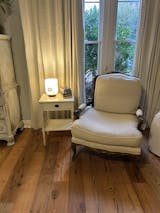
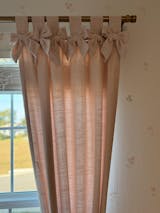

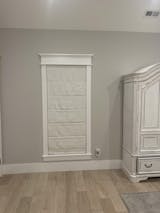


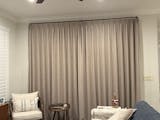
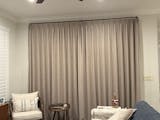
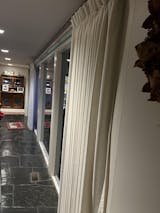












Leave a comment